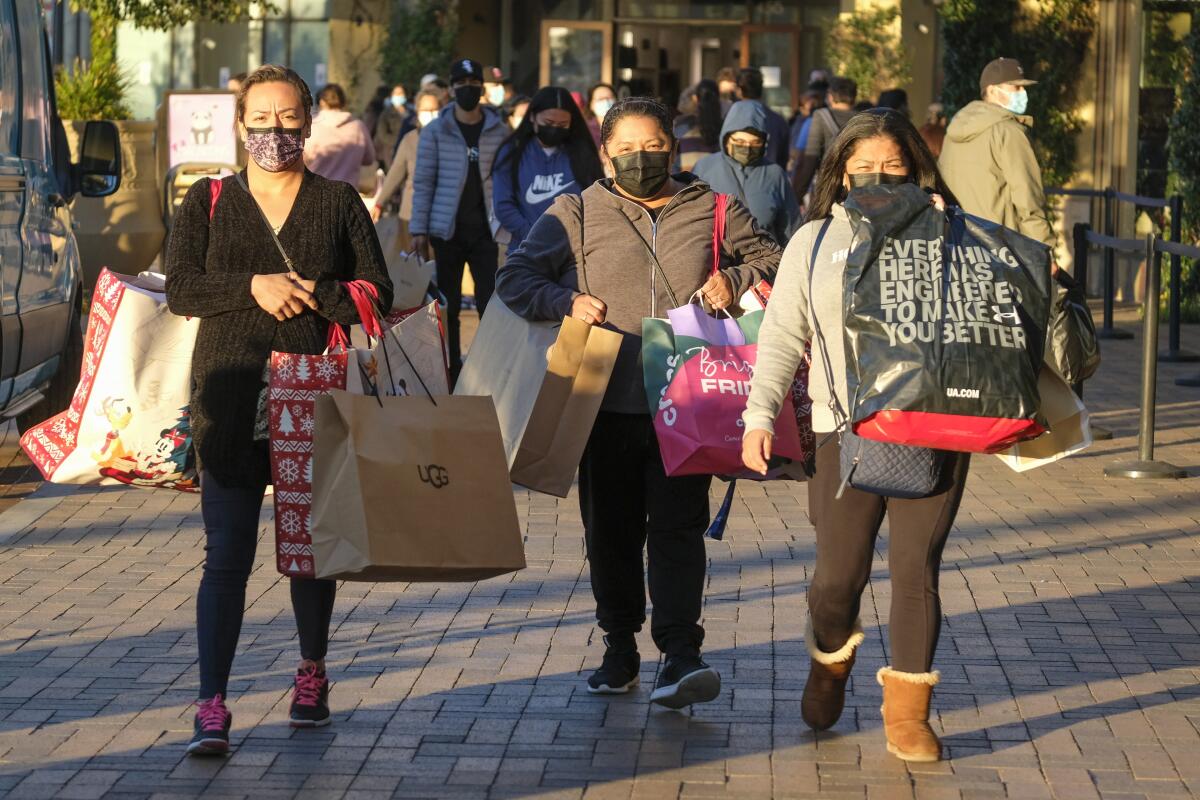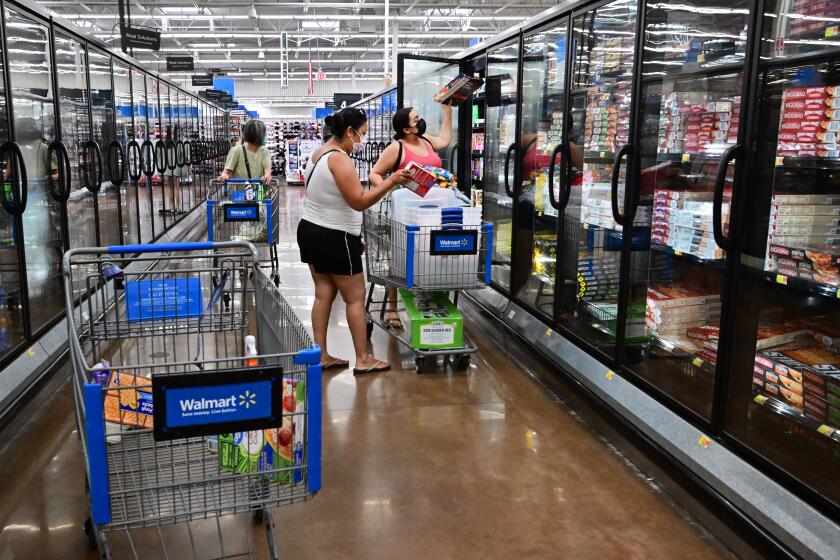Inflation chills holiday sales, consumers lean on savings and credit, retail group says

- Share via
The nation’s largest retail trade group expects holiday sales growth to slow to a range of 6% to 8%, compared with the blistering 13.5% growth of a year ago.
The National Retail Federation on Thursday characterized the projected holiday sales as “healthy” but noted that many consumers will need to turn to savings and credit cards to finance their gift giving.
Inflation can pump up sales even if people are buying less, and with prices surging to uncomfortable levels, industry analysts believe that inflation-adjusted sales could be flat or even negative this year. Amazon.com recently projected the slowest holiday-quarter growth in the company’s history.
The retail group’s forecast is in line with a slew of holiday predictions from various research and consulting firms, which point to a sales slowdown from last year. AlixPartners expects holiday sales to be up 4% to 7% from last year’s total, which was up 16% from the previous year.
Holiday sales have risen an average of 4.9% over the last 10 years. And Americans ramped up spending during the pandemic, which accounted for some outsized sales numbers.
With consumer prices up 8.2% in September from a year ago, bolstered by rising rents and higher costs for food, healthcare and cars, the Fed faces more pressure.
Consumer spending accounts for nearly 70% of U.S. economic activity, and Americans have remained resilient even with inflation near four-decade highs.
Yet surging prices for so many things, including mortgages and rent, have upped the anxiety level. Overall spending has slowed and shifted increasingly toward necessities such as food, while spending on electronics, furniture, new clothes and other non-necessities has faded.
Shoppers are also getting a speedy start on the holiday shopping season, picking up gifts in October as retailers including Walmart and Target pushed out holiday discounts earlier than usual to help shoppers spread out their spending in difficult economic times, in addition to clearing out unexpectedly high inventories.
“While consumers are feeling the pressure of inflation and higher prices ... consumers remain resilient and continue to engage in commerce,” National Retail Federation Chief Executive Matthew Shay said.
The retail group predicted that sales in November and December will grow to between $942.6 billion and $960.4 billion. Holiday sales exploded during the pandemic with Americans splurging on pajamas, home goods and other items, mostly online.
The retail group expects that online and other non-store sales, which are included in the total, will increase between 10% and 12% to a range of $262.8 billion to $267.6 billion.
From the vital to the whimsical, this unique gift guide features tech-enhanced products to help you unplug or stay connected in your busy life.
The numbers exclude automobile dealers, gasoline stations and restaurants.
The forecast considers a variety of indicators, including employment, wages, consumer confidence, disposable income, consumer credit, previous retail sales and weather.
Inflation in the United States accelerated in September, with the cost of housing and other necessities eliminating much of consumers’ pay gains. Overall prices rose 8.2% in September compared with a year earlier, down slightly from August, according to the latest government report.
The Federal Reserve increased its benchmark interest rate Wednesday by three-quarters of a percentage point for a fourth straight time in its latest bid to cool inflation and consumer spending.
It was the central bank’s sixth rate hike this year — a streak that has made mortgages and other consumer and business loans increasingly expensive.
More to Read
Inside the business of entertainment
The Wide Shot brings you news, analysis and insights on everything from streaming wars to production — and what it all means for the future.
You may occasionally receive promotional content from the Los Angeles Times.












